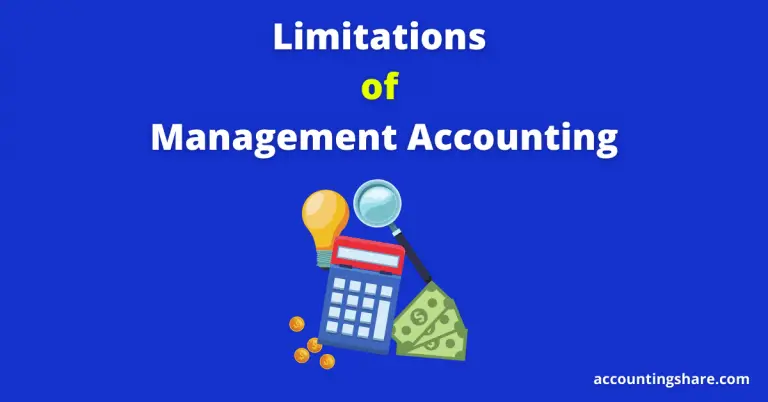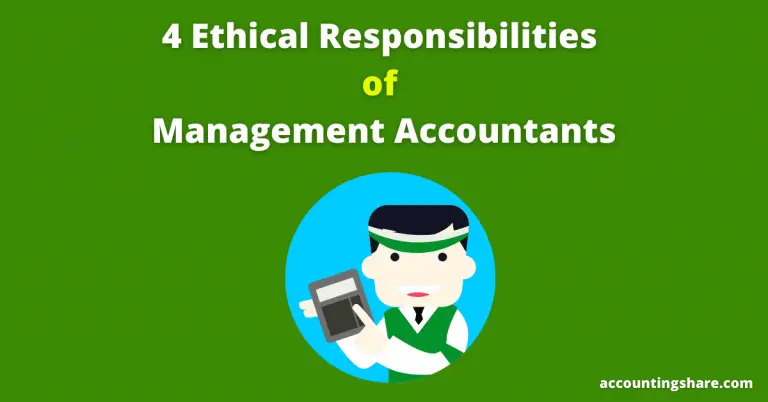What are the Management Accounting Techniques? [Notes with PDF]
Management Accounting uses different tools and techniques to provide management with appropriate and useful information to carry out its managerial functions.
Various methods and techniques that management accounting uses are as follows:
1.Analysis of Financial Statements:
Financial statement analysis is the methodological and systematic analysis and interpretation of the data, as reported in the balance sheet and income statement. It intends to obtain the required and appropriate information to management to assess its liquidity, solvency, profitability, operation, and management results.
Management Accounting uses various financial statement analysis tools such as ratio analysis, comparative financial statements, cash flow statements, and trend analysis to analyze and interpret financial statements.
2. Analysis of Fund Flow:
Fund flow analysis is a comprehensive analysis of an enterprise’s inflows and outflows of a fund over a given accounting period.
Management accounting does such an analysis at the end of an accounting period by preparing a fund flow statement.
During an accounting cycle, the fund flow statement indicates inflows and outflows of funds from different operations of the enterprise.
Since working capital is the lifeblood of any business concern, successful working capital management is highly effective for the smooth running of all the company’s operational activities. Management accounting also uses fund flow analysis to efficiently and effectively control the working capital of a business.
3. Analysis of Cash Flow:
It is a comprehensive review of an enterprise’s cash and cash equivalent inflows and outflows (i.e., cash in hand, bank cash, and short-term investments) over a given accounting period. At the end of an accounting period, a cash flow statement helps to perform such analysis.
The cash flow statement prepared in this form demonstrates the cash inflows and outflows over an accounting period from different organization operations. As cash movement is significant to any business issue, effective cash management is highly effective for liquidity planning.
Management accounting also uses Cash flow analysis as a management accounting tool for efficient and effective cash management of an issue.
4. Costing Techniques:
Management accounting uses Different costing methods such as variable costing, absorption costing, standard costing, and activity-based costing as management accounting tools in the cost control and decision-making process.
i. Absorption Costing
Absorption costing is a technique that considers the fixed and variable costs of calculating the unit cost of the products produced during the operation carried on.
Under this technique, the cost per unit of the goods produced represented the variable cost per unit plus the allocated share of fixed expense per unit.
Here, the absorbed cost is the total direct cost and overheads cost. The absorption costing is also referred to as total or full costing.
In this costing technique, the costs per unit will only remain the same if the output level remains constant. When the output level changes, the cost per unit also changes as the unit cost is fixed. Even if the output level is changed, fixed costs remain constant.
Absorption costing valuates the closing inventory under this technique at total costs, including both variable costs and fixed costs.
ii. Variable Costing
Variable costing is the technique that includes the cost of goods manufactured or operated only in varying ways.
Direct costing is another name for variable costing. Here, Variable costing doesn’t consider the fixed production costs in the product’s cost. It considers the fixed cost as a periodic cost.
Variable costing determines the contribution margin by deducting all variables expenses from the total sales price. After that, it identifies the Net profit by deducting fixed costs from the contribution margin.
iii. Standard Costing
Standard costs are the default production costs for a single unit or several product units shortly for a certain period. Under present or anticipated operating conditions, it is a product’s planned cost.
Standard costing uses efficiencies, comparing the workforce and the material used for producing a good to those required for the same goods under “standard” conditions.
A standard costing system helps businesses by variance analysis in the planning and management of operations. It was a formal basis for evaluating operations performance and efficiency.
iv. Life Cycle Costing
Life cycle costs track and collect costs from initial research and development to final marketing for each product or service to customers.
v. Target Costing
Target costing is an approach to determine the cost of a product or service to be less the target profit based on its selling price. It is not a market-driven way of looking at price-cost relation but a traditional approach to marking costs.
vi. Activity-Based Costing
Activity-based costing is a costing methodology identifying the organization’s activities and allocating resources for each activity, depending upon its actual consumption, to all products and services. In comparison to legal costs, this model assigns more indirect costs to the direct costs.
5. Budgetary Control:
Budgetary control consists of budget management, comparison of actual outcomes with budgetary estimates.
They assess any difference in actual results from budgetary estimates by calculating differences and implementing necessary measures to resolve these differences.
The control, planning, and performance evaluation of a company is a vital tool widely used for management accountability.
6. Statistical and Operational Research Techniques:
Different statistical and operational research technologies, such as diagrams, indexes, numbers, sampling, time series, regression analyzes, linear programming, game theory, and program evaluation and evaluation techniques (pert), frequently serve as management accounting tools in their assessment and decision-making processes.
7. Responsibility Accounting:
Responsibility accounting involves preparing a budget for different responsibility centers and assigning the individuals concerned, managers for implementing the budgetary directions, and specific responsibilities.
Management accounting uses Responsibility accounting as a tool for the process of cost control.
8. Management Reporting:
It includes preparing and presenting performance reports of various management activities at regular intervals for effective planning, control, and performance assessment and decision-making purposes.
Management accounting uses Management reporting as an essential tool.
You can also read:







